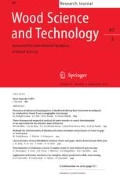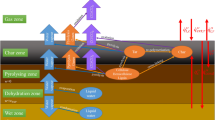Abstract
The Spanish grown laricio pine (pinus nigra subsp. saltzmannii) covers an area of 353,000 hectares and produces an annual figure of 310,000 m3 of roundwood. It ranks as the fourth most important Spanish conifer and its timber is frequently used in construction. The results of the mechanical characterization of laricio pine timber coming from three different Spanish regions of provenance (R. 6 “Alto Maestrazgo”, R. 7 “Sistema Ibérico Meridional” y, R.8 “Cordilleras Béticas”), carried out in accordance with the methodologies and requirements of EN 408, EN 384 and EN 338, are considered in the present study. 3612 boards, from 15 different samples ranging in size from 100×40×2500 mm to 200×70×4500 mm have been tested in accordance with EN 408. The samples represent the variety of cutting patterns, log sources, sizes and quality of the material present in the market.
The testing material was classified in accordance with the Spanish standard of visual strength grading UNE 56544, which sets two different grades, namely, ME1 and ME2. One part of the sample (681 boards) was classified by applying the German standard DIN 4074. In accordance with the results, Spanish grade ME1 can be assigned to strength class C35, and while grade ME2 is assigned to C18. The influence of the rate of growth on the mechanical properties of timber was also assessed concluding that the size of the growth ring, considered at species level, is not an adequate predictor of the mechanical quality of the material. When considering the use of this timber in structures, the high level of deformations during drying (an 11.1% average value) suggests the convenience of making use of dried timber.
Different relations between the strength and local modulus of elasticity in bending of timber and the major properties studied (E cen, E m,g , ρ, RW) are also considered.

Similar content being viewed by others
References
Catalán Bachiller G et al (1991) Las Regiones de Procedencia de Pinus sylvestris L. y Pinus nigra Arn. Subsp. salzmannii (Dunal) Franco en España. ICONA. pp 29 y planos
Díez R, Conde M, Fernández-Golfín JI, Rosskpf S (2000) Visual strength grading of structural timber of Laricio pine: comparison of results according to UNE 56544 and DIN 4074 standards. Rev Invest Agraria 9(2):375–380
DIN 4074–1 (1989) Sortierung von Nadelholz nach der Tragfähigkeit, Nadekschnittholz
EN 1912 (1997) Structural timber. Strength classes. Assignment of visual grades and species
EN 338R (2000) Structural timber. Strength classes
EN 384R (2000) Structural timber. Determination of characteristic values of mechanical properties and density
EN 408R (2000) Timber structures. Structural timber and glued laminated timber. Determination of some physical and mechanical properties
EN 1310 (1997) Round and sawn timber. Method of measurement of features
Fernández-Golfin Seco JI, Díez Barra MR (1996) Growth rate as a predictor of density and mechanical quality of sawn timber from fast growing species. Holz Roh Werkst 54:171–174
Fernández-Golfin JI et al. (2001) Characterization of Pinus nigra subsp. salzmannii lumber. Final report of project SC96–045-C2–2. Internal report
prEN 13183–2 (1999) Round and sawn timber. Method of measurement of moisture content. Part 2: method for estimating moisture content of a piece of sawn timber (electrical method)
prEN14081–1 (2000) Timber structures. Strength graded structural timber with rectangular cross section. Part 1: general requirements
Regato P (1993) Geographical distribution of the Spanish forest species. Area de Selvicultura y Mejora Forestal. CIFOR-INIA, internal report
UNE 56544 (2000) Clasificación visual de la madera aserrada para uso estructural
Author information
Authors and Affiliations
Corresponding author
Rights and permissions
About this article
Cite this article
Fernández-Golfín Seco, J.I., Diez Barra, M.R., Hermoso Prieto, E. et al. Mechanical characterization of timber from Spanish provenances of laricio pine according to European standards. Wood Sci Technol 38, 25–34 (2004). https://doi.org/10.1007/s00226-003-0215-3
Received:
Published:
Issue Date:
DOI: https://doi.org/10.1007/s00226-003-0215-3




